On this 4th of July weekend, I thought it would be appropriate to highlight two things that should be near and dear to all of our hearts: the military and religious legacies of our nation. Both of these are displayed beautifully in the magnificent Cadet Chapel on the grounds of the US Military Academy at West Point, NY.
Now, for clarification. With my Marine Corps background, I am not issuing an actual endorsement of the Army as such (heaven forbid!). I like GIs, really I do, and I appreciate their role as the second line of defense when the Marines are unavailable, but…well, I’ll stop there.
I’ll give them this: West Point definitely has a magnificent chapel! In the feature picture above you can see the chapel overlooking the Academy grounds from its high position on the hill.
The Chapel
If it looks like a fortress, well, that’s what it was meant to look like. Military theme all the way. Here’s a quick view of the exterior and the majestic entrance:
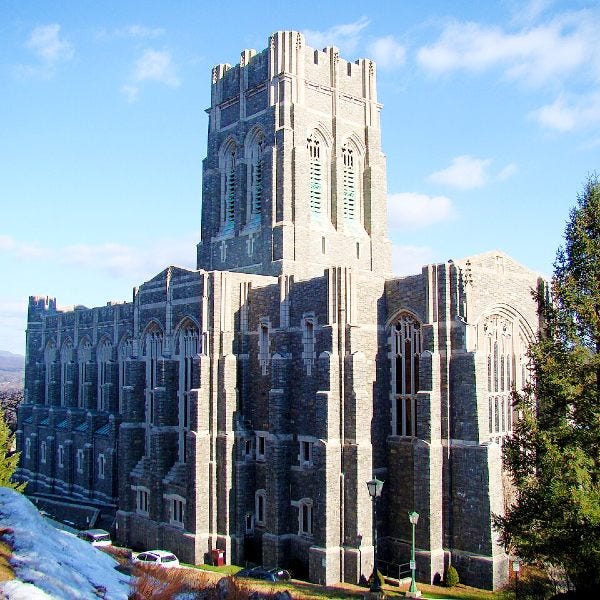
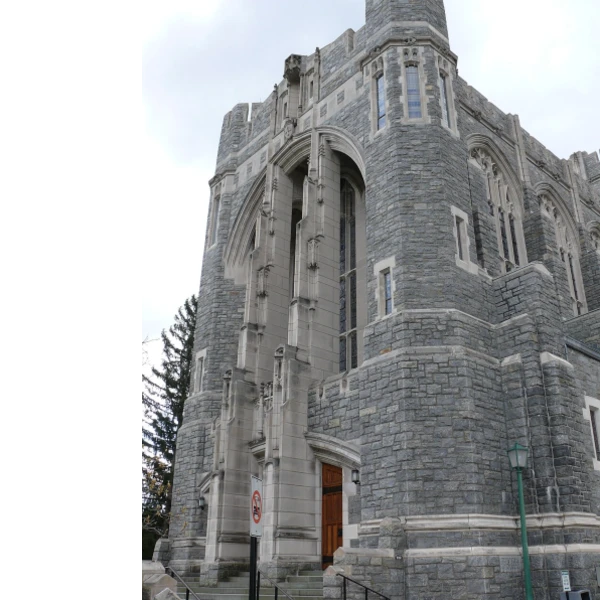
What may not be apparent is the architectural style. It’s Gothic, or more specifically, Neo-Gothic, because it was built in the first decade of the 1900s, in the fervor of the “Gothic Revival” that swept through Europe and North America in the 1800s.
With its central tower and somewhat blocky design, this chapel imitates English Gothic more than French, which is usually pointed and soaring.
The original Gothic style flourished in the Catholic Middle Ages (1100s to 1400s), but we see its enduring legacy in many of the churches and cathedrals in our country some 800 years later.
Of course, in this case we have to take the title “chapel” with a grain of salt. It’s not the seat of a bishop or a parish church as such, but it seems like a cathedral!
That too squares with a venerable medieval tradition of establishing magnificent houses of worship for non-parochial purposes, much like the famous Sainte-Chapelle in Paris.
The interior is stunningly beautiful as well. Here are views up and down the nave. The altarpiece features a sculpture of a medieval knight in armor equipped for battle.
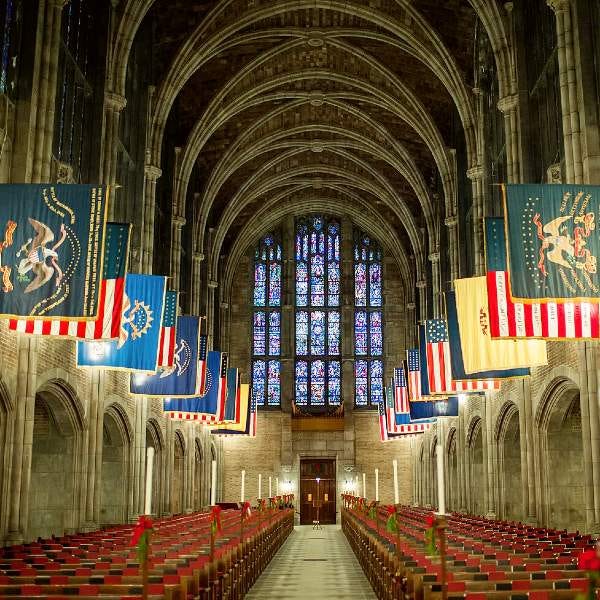
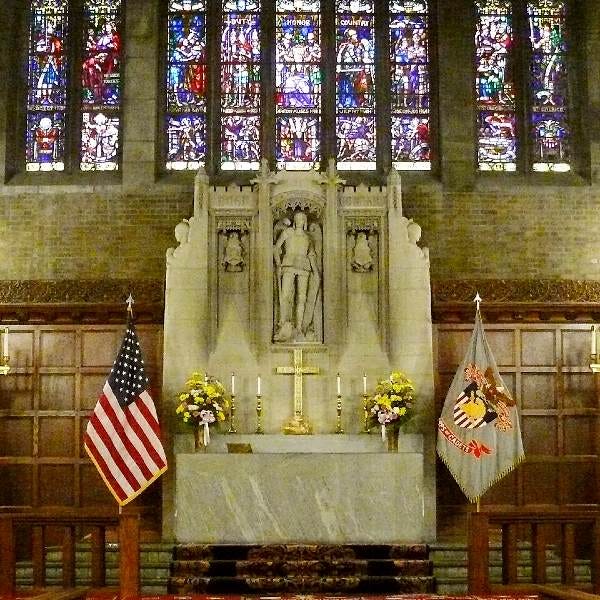
Incredible History
It’s not my purpose to go deeply into American history here, but West Point surely was a key player in America’s early days. The area got its name because it literally is a piece of land that comes to a point on the western side of the Hudson River in upstate New York. (You’ll see it in the map below.)
Gen. Washington’s troops occupied the land and built a fort there because it had numerous advantages for defending our fledgling country against the Red Coats:
It was on very high ground (always an advantage in war), and
It was situated within a convenient “S” curve in the river.
These factors made that “point” of land the ideal defensive position to keep the British Navy out of the Hudson Valley. And they did.
They had a little help from the opposite eastern segment of land which was a giant swamp as well as an 1800-foot long iron chain they stretched across the river to keep the huge warships from passing. It was called The Great Chain for obvious reasons. Each of its links was 2-foot long and the whole chain weighed 65-tons! Pretty smart.
It wasn’t a new idea: they were just imitating the tactics of the Byzantine knights who stretched similar defensive chains across the body of water leading up to the city of Constantinople (modern Istanbul, Turkey). Here you see the West Point “S” curve, the chain, and the swamp. Amazing!
After the Revolutionary War, the US Army turned the land into its Military Academy. It was formally established by an Act of Congress and signed into law by Thomas Jefferson in 1802.
Just think of any famous Army general from any war the US has fought since 1802, and you can be assured that he was a West Point grad.
Largest Chapel Organ
The Cadet Chapel also has the distinction of holding the largest single chapel pipe organ in existence. [You can read about the world’s largest pipe organ here.]
It has 23,511 pipes which are spread the entire length of the chapel on the second tier so as to even out the sound. The trumpets, when they blare, must seem like a roll of blazing thunder coming from the back wall!
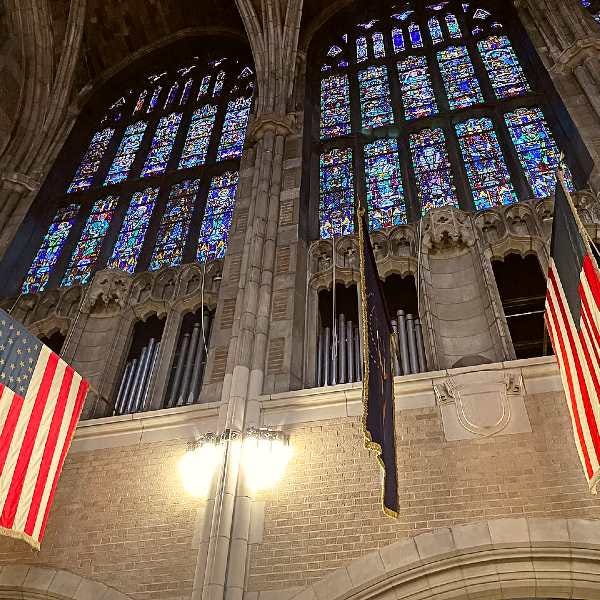

Perhaps we should finalize this short excursion into American history with music from the famous organ itself and the US Army Band. These two patriotic pieces pay tribute to our country and remind us that even a military chapel can be in its own way, a sacred window of sight, sound, and devotion.
The Battle Hymn of the Republic | The US Army Field Band (5:18)
"America the Beautiful" | West Point Cadet Chapel Organ (2:23)
----------
Photo Credits via Wikimedia: Feature: Color Guard marching and Chain Map (USMA); Exterior (Ahodges7); Ad Meskens (Front; Trumpets; Altar); Nave (J & B Bristow); Schedukiam (Organ console; Pipes and Stained Glass).







